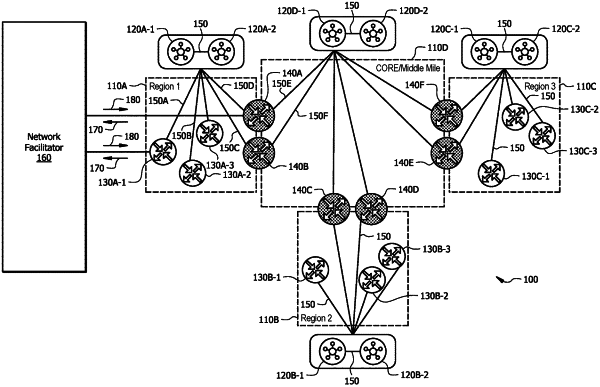| CPC H04L 45/64 (2013.01) [H04L 41/0894 (2022.05); H04L 45/02 (2013.01); H04L 63/029 (2013.01)] | 9 Claims |

|
1. A software defined wide area network (SD-WAN) comprising:
a first region comprising:
a plurality of first routing controllers, each first routing controller stores a plurality of first routes for the first region; and
a plurality of first SD-WAN edge routers; and
a second region comprising:
a plurality of second routing controllers, each second routing controller stores a plurality of second routes for the second region;
wherein each first routing controller of the first region is prevented from storing the plurality of second routes for the second region; and
each second routing controller of the second region is prevented from storing the plurality of first routes for the first region; and
a plurality of second SD-WAN edge routers;
wherein each first SD-WAN edge router of the first region is configured to:
establish Overlay Management Protocol (OMP) peering connections with the plurality of first routing controllers of the first region; and
avoid establishing OMP peering connections with the plurality of second routing controllers of the second region; and
wherein each second SD-WAN edge router of the second region is configured to:
establish OMP peering connections with the plurality of second routing controllers of the second region; and
avoid establishing OMP peering connections with the plurality of first routing controllers of the first region.
|